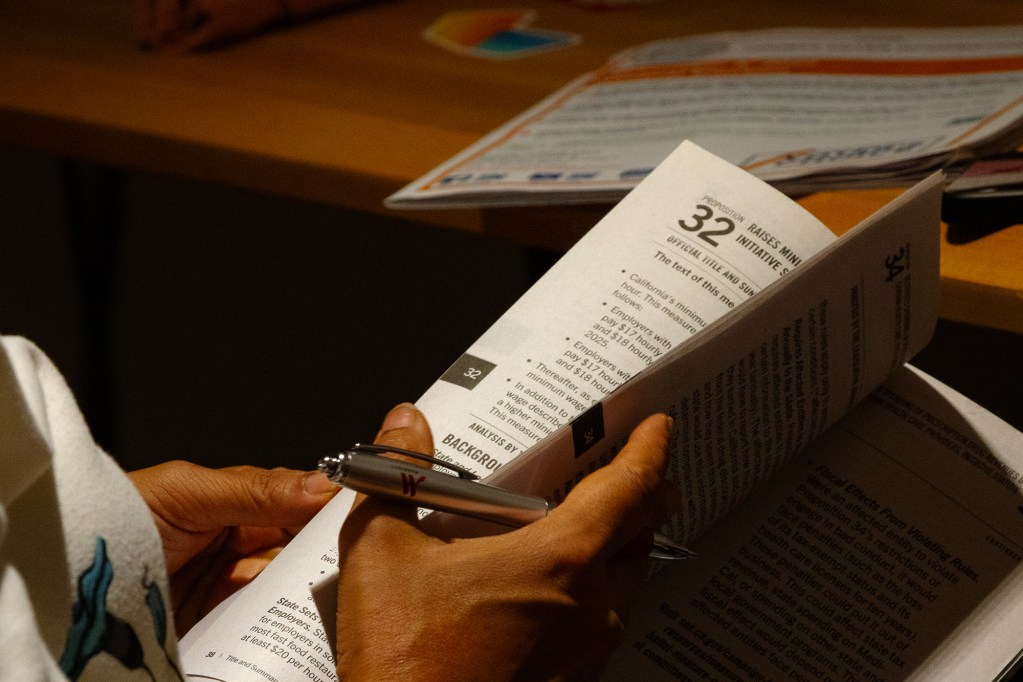
Last weekend’s slate of college and professional football games presented television spectators not only with physical confrontations, but cosmic ones as well. On the fields of play, officials in striped shirts compelled rival teams to compete within well-defined rules and imposed yardage penalties — and even ejections — on violators.
Game breaks, however, included a final flurry of political campaign spots, from the presidential level downward, that were largely no-holds-barred attacks on the character of rival candidates.
The last minute vitriol signaled that the campaigning is finally — and blessedly — done, and Election Day has arrived.
During the campaigns, public and media attention focused mostly on the competition for offices, such as the too-close-to-call duel for the White House between Vice President Kamala Harris and former President Donald Trump.
In deeply blue California, that contest is a no-brainer. Harris will easily claim its 54 electoral votes, 20% of what she needs to win the presidency.
So what’s on the ballot that will particularly affect Californians’ lives? It could be three statewide ballot measures and hundreds more on local ballots that test voters’ appetites for higher taxes and more debt for public works projects.
Two statewide measures would authorize the state to borrow nearly $10 billion for school projects (Proposition 2) and another $10 billion for climate change-related programs (Proposition 4). Meanwhile, Proposition 5 would lower the vote requirement for most local bond issues from two-thirds to 55%, thus making passage much easier.
Local ballots are loaded with 531 bond and tax increase measures this year, reflecting an assumption that the higher turnout for presidential elections increases approval chances for taxes and bonds. The biggest chunks are 269 school bond issues totaling nearly $50 billion, according to the California Taxpayers Association, and 18 local government bonds totaling $2.4 billion.
Total costs of the bonds, including interest over decades of repayment, would be roughly double the face amounts. However, in drafting bond issues, local officials often downplay or even ignore their tax increases as they dwell on supposed benefits.
Moreover, while bond issue sponsors insist that they will only pay for public works and not operating costs, that claim can be a subterfuge. School districts often neglect maintenance of buildings to make salary increases that placate unions, then seek bond issues to make repairs. In doing so, they violate a principle of bond financing: using it only on projects that will outlast the repayment period.
One of the biggest school bond issues is a $9 billion proposal in Los Angeles Unified. It’s drawing criticism from the Howard Jarvis Taxpayers Association after an LA Unified trustee, Tanya Ortiz Franklin, told UCLA’s student newspaper, the Daily Bruin, that the school board placed Measure US on the ballot at the last minute to thwart opposition.
“There are some folks in opposition generally to increase taxes, and the more advanced notice you give people, the stronger of a campaign against you they can prepare and run,” Ortiz Franklin told the Daily Bruin.
It illustrates the hardball tactics that local officials, especially school boards, use to get bonds approved.
The local tax measures cover a variety of levies, but 110 of them would increase sales taxes, raising about $2.8 billion a year, the taxpayers association calculated. If passed, measures would increase state and local sales taxes to as much as 10.75%, the highest of any state, according to the Tax Foundation, a nonprofit think tank.
Given their long-term or even semi-permanent nature, tax and bond measures awaiting voter decisions this week will have pocketbook impacts decades beyond the tenures of candidates who win office this week, including the next president of the United States.
They warrant much more attention than they receive.



